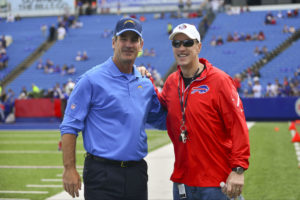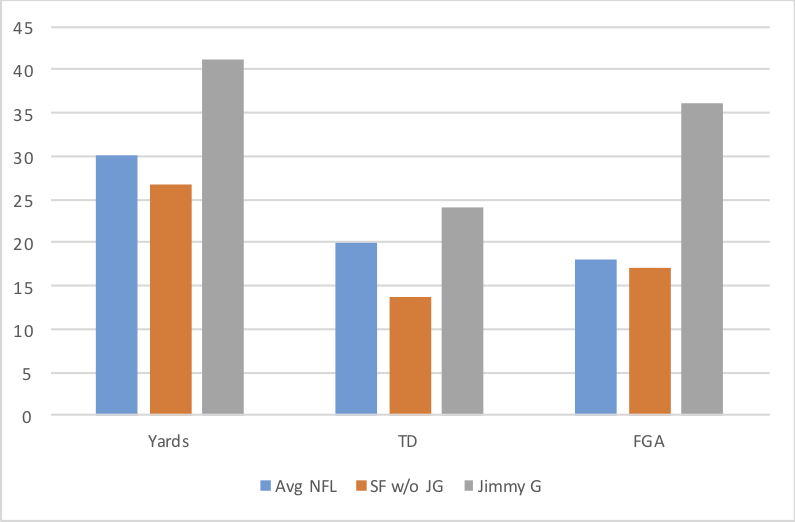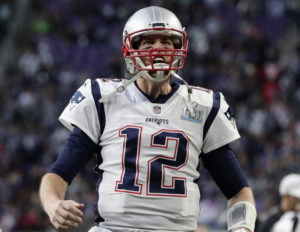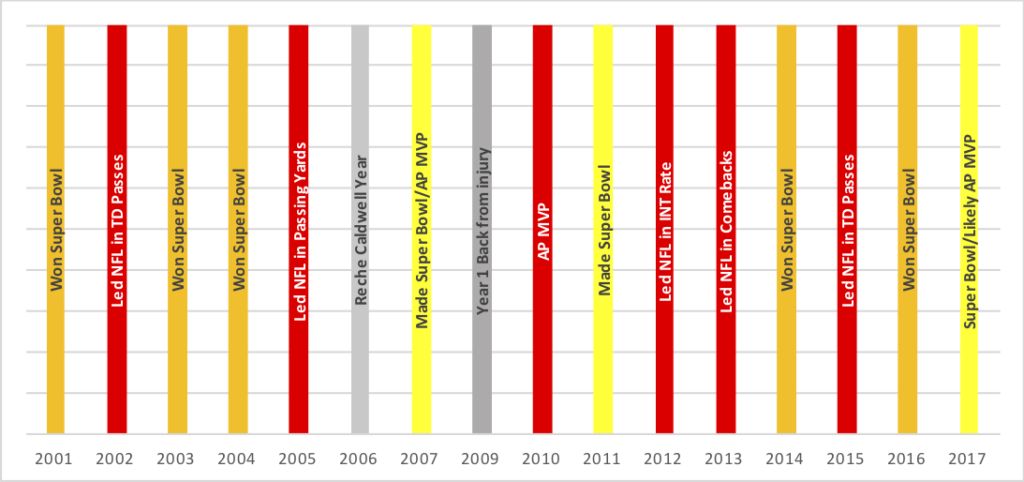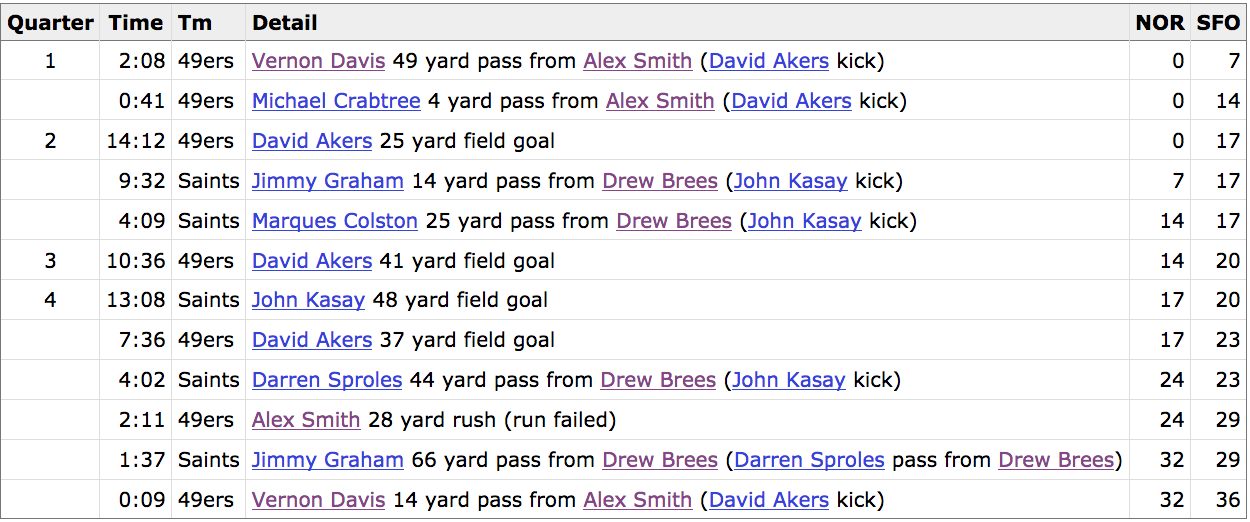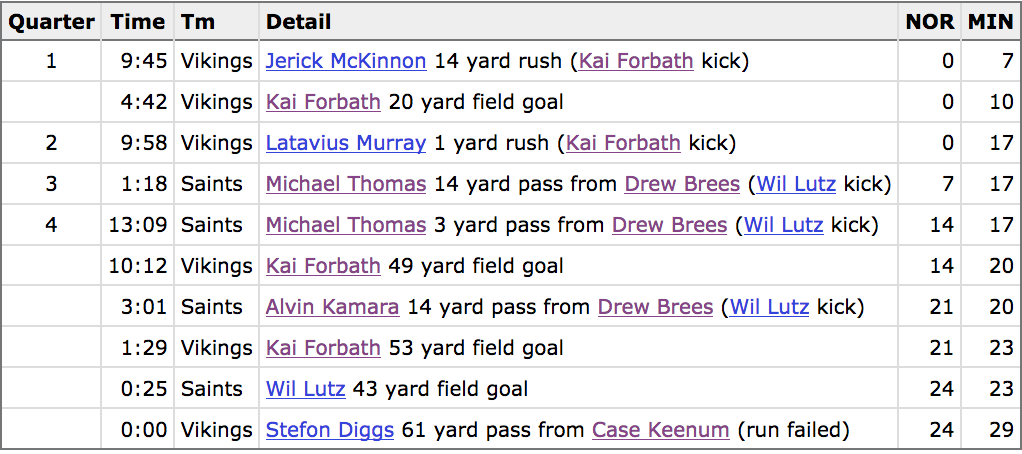There are only three games left this season, and two of those are taking place today. So I’ll be turning the site today into a live blog with posts throughout the game, starting at 3pm.
11th Super Bowl Appearance for Bill Belichick
This will be the 11th Super Bowl appearance for Bill Belichick, which is of course a record for a coach or player or owner. The graph below shows the number of Super Bowl appearances for Belichick by year:

Tommy U?
The last QB to lead the NFL in passing and win the championship in the same season was Johnny Unitas in 1961. That’s right: no quarterback in the Super Bowl era has ever done that. But Tom Brady beat Philip Rivers (by 62 yards) to win the passing yards crown for the third time in his career (’05, ’07).
If Brady wins the Super Bowl and the AP Most Valuable Player award, he’ll also be the first quarterback to do that in the same season since Kurt Warner in 1999. After Matt Ryan last season and Cam Newton in 2015, AP MVPs have made 8 of the 17 Super Bowls since then, but are 0-8 in those games (despite being favored in 6 of those 8).
6:15 Update
There was a 9-year stretch where the Brady/Belichick Patriots didn’t win any Super Bowls, but now the Brady/Belichick Patriots are on the verge, for the 2nd time, of winning 3 Super Bowls in 4 years.
5:35 Update
Great drive by Brady and the Patriots, overcoming a 3rd-and-18 and no Gronk to drive down for a touchdown.
The Jaguars can’t just run the clock out. With 8:44 left, and clinging to a 3-point lead, Jacksonville can’t deploy the Bills game end-game strategy again and expect to win.

5:05 Update
Much of the story today can be explained via third down conversions. The Patriots are just 1-for-8 on third down, while the Jaguars are 6-for-10. On the other hand, field position is starting to turn New England’s way. Field position had been even, but Jacksonville’s second drive of the second half started at the 10, after a 3-and-out the Patriots drive started at the 46, and then even after a 3-and-out, NE was able to pin Jacksonville down to its own 9.
After an ugly first down play, Jacksonville has now recovered and is driving. A big third down conversion from Bortles just now.
Keenum and Foles
Nick Foles and Case Keenum both entered the NFL in 2012, and both have started just under 40 games in the regular season. Of the 34 passers with 1,000 attempts since 2012, Foles ranks 18th in ANY/A while Keenum ranks 25th.
But while Foles has a slightly higher ANY/A average (6.22 to 5.99), the players obviously got there in very different ways. The graph below shows their career ANY/A average after each week of each season since 2012.

Also, Keenum has started 14 regular season games for both the Rams with Jeff Fisher and the Vikings. The splits are, well, remarkable:
Passing Table
| Yrs |
Age |
Tm |
G |
GS |
QBrec |
Cmp |
Att |
Cmp% |
Yds |
TD |
TD% |
Int |
Int% |
Lng |
Y/A |
Y/C |
Y/G |
Rate |
Sk |
Yds |
NY/A |
ANY/A |
Sk% |
| 2 yrs |
27-28 |
RAM |
16 |
14 |
7-7-0 |
272 |
447 |
60.9 |
3029 |
13 |
2.9 |
12 |
2.7 |
65 |
6.8 |
11.1 |
189.3 |
79.5 |
27 |
168 |
6.04 |
5.45 |
5.7 |
| 1 yr |
29 |
MIN |
15 |
14 |
11-3-0 |
325 |
481 |
67.6 |
3547 |
22 |
4.6 |
7 |
1.5 |
65 |
7.4 |
10.9 |
236.5 |
98.3 |
22 |
136 |
6.78 |
7.03 |
4.4 |
4:00 Update
Based on my efficiency ratings, the Patriots defense ranked 21st against the pass, 30th against the run, and 26th overall. New England’s defense ranked 5th in points allowed, but that was always highly misleading.
The Jaguars have 13 first downs on three drives and have 14 points. The Jaguars offense also has been underrated (it ranked a misleading 5th in points scored, but it was no worse than an average offense despite being referred to by many as a liability), but looks outstanding today. The short of it? Jacksonville’s offense has feasted on bad defenses this year, and they are doing that again today.
3:40 Update
The Patriots defense was bad this year, particularly at preventing first downs. Jacksonville now has 7 first downs through two drives, after a 7-play, 5-first down, 76-yard drive for a touchdown.
Bortles looks pretty good, and the Patriots defense looks pretty bad.
3:30 Update
The Jaguars are underdogs today (although on paper they may be the better team). But an underdog wants to limit possessions as part of a David strategy. So far, that seems to be going okay for Jacksonville — the first three drives for these teams took over 12 minutes, as there were just two incomplete passes.
3:10 Update
Pats choose to go for it on 4th-and-2 from the 30 on the first drive of the game. This feels like the right call, given that a field goal is not a given.
Brady throws a lob pass to Amendola on a wheel route for a 20-yard pickup.
3:00
Only four teams since 1978 have won multiple playoff games despite being a touchdown underdog.
The Tom Coughlin-led 2007 Giants won three such games, including a win in the Super Bowl over the Brady/Belichick Patriots.
The Coughlin-led 1996 Jaguars were the first team to win two such games; the Brady/Belichick 2001 Patriots were the second, and the 2012 Ravens — including a win over the Brady/Belichick Patriots — were the third.
Jacksonville won as a 7-point underdog in Pittsburgh last week, and is a 7.5-point underdog today in Foxboro.
Pre-Game Thoughts
As for now, what are your predictions?
If I had to rank the eight units we are going to see today, I would go:
Tier 1:
Jaguars defense
Vikings defense
Patriots offense
Tier 2:
Eagles defense
Tier 3:
Vikings offense
Tier 4:
Jaguars offense
Tier 5:
Patriots defense
Tier 6:
Eagles offense
As for the head coaches, the Patriots have the clear advantage, while the Eagles May have a slight advantage. New England and Philadelphia are arguably the less talented teams but are at home, which means this should be two great games.
My predictions:
Jacksonville 24, New England 20
Philadelphia 17, Minnesota 16

